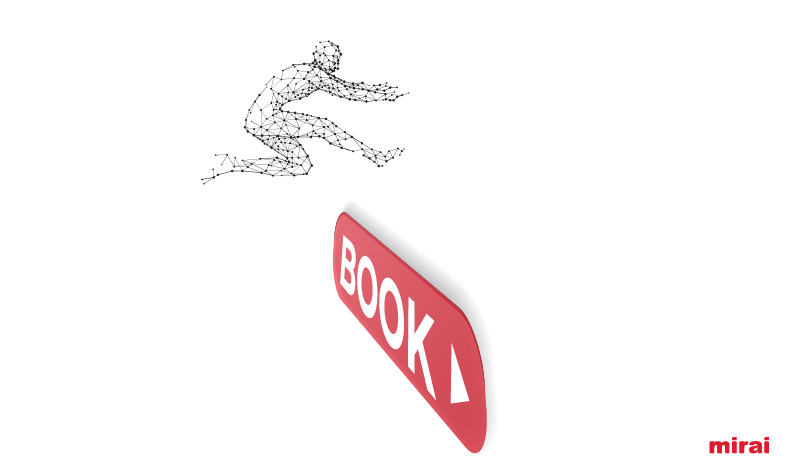Hoteliers are obsessed with “bringing as many users as possible to my website.”
NB: This is an article from mirai, one of our Expert Partners
Attracting quality traffic and not just any users is an essential part of a good direct sales strategy. To this end, most hotels develop more or less ambitious online marketing plans. Investments are often substantial, but the results tend to disappoint.
Subscribe to our weekly newsletter and stay up to date
Not all users who visit your site end up booking a room. Many didn’t even come to make a booking but to look for a phone number or address, check out photos or clarify doubts about the facilities. Many others, however, didn’t manage to book despite trying to do so. Have you ever wondered how many visitors of each type you have? It’s hard to know, really. And it doesn’t help that website platforms or booking engines provide almost no information about what is known as the “booking funnel” or “conversion funnel”. One might say you’re essentially in the dark when it comes to this matter. As a result, the vast majority of hotels wrongly assume that users who don’t book on their website, simply aren’t willing or ready to do so.
This complacency leads to a vicious circle that can become quite dangerous: on the one hand, you have users trying to book but not managing to do so and, on the other hand, a hotel that is investing in attracting even more users to the website only to, once again, have most of them leave without booking. This spiral silently but forcefully eats away at the efficiency of your direct sales.
How to break this spiral? By understanding the booking funnel, identifying the problems at each level and applying concrete solutions to each case. We will group them all into three hurdles that every user who wants to book a stay at your hotel must overcome. Three hurdles that, strangely enough, are the result of decisions that you as a hotelier have made, whether consciously or not. Reducing or simply eliminating these hurdles should be your number one priority, as it will increase the volume and profitability of your direct sales. So, get cracking and tap into the potential that direct sales has proven to have in the aftermath of the pandemic.
The first hurdle: your website and access to the “check availability and prices” section
The vast majority of the traffic that lands on your website comes from people searching for you by name on Google or TripAdvisor, which means they already know you. Those who have already made up their mind will be very much oriented towards “buying something”, in most cases a room, though it could also be a meeting room or a reservation at the restaurant. We therefore have a qualified lead (which we have probably attracted by paying) and we are faced with the challenge of “converting” it into sales. So far so good, but this is where the problems begin.
- An unattractive, unusable or slow website. We will not spend much time on this point, as we have all heard it before, but it is important nevertheless. There are still many websites out there that could be substantially improved, especially their mobile phone versions. Slowness is another typical error, and the use of a CDN (Content Delivery Network) is essential to speed up loading.
- Filling the site with ads and pop-ups about offers, Covid measures or urgent messages to try to speed up the booking. Do not confuse presenting lots of neatly ordered information, as OTAs do, with throwing up dozens of messages or uncomfortable pop-ups that users have to close in order to continue browsing. Users have low tolerance and little patience. Don’t burn them out right from the get-go.
- Difficulty in finding the booking engine. The booking option must be visible at all times, no matter the section or height (scroll up/down). Some still make the mistake of hiding booking access for aesthetic reasons or hiding it behind icons that they think everyone will understand, when this isn’t the case.
There are certain market metrics that can help you at this point. Out of every 100 visits you receive on your website, between 30% and 45% should reach the page for checking prices and availability. Check your number yourself in Google Analytics (you can see it under Conversions > Ecommerce > Shopping Behaviour, if you use Google Analytics enhanced ecommerce) or ask your web or engine company. The percentage may vary depending on the services and facilities you have, but don’t let your guard down. An unusually low number indicates a problem.
- A bad experience when it’s time to “start” booking. You’ve got the user to come this far… but your booking engine isn’t up to the task.
– The mobile phone experience must be complete, with no need to zoom in and out, and fully adapted to finger effects, avoiding the use of arrows. Anything else is a desktop engine adapted to a mobile phone. This is no longer enough.
– Calendars must show Sundays as the first day in countries where this is the norm, such as the USA or Japan. Having Monday appear as the first day for an American is clearly a mistake.
– Ask for just enough information. There are booking engines that, in order to display prices, ask in advance for the type of room or board the user is interested in. Limiting the products you present users with substantially reduces conversion.
– Allow users to book several rooms at once. And each with its own occupancy. If they can’t, you run the risk of them going to Booking.com or Expedia, which will allow them to do so. 11% of bookings are multi-room and 35% of these are for different occupancies. The grand total of multi-room bookings accounts for 18% of total revenue.
– Handle bookings with children properly. Define in clear terms what it means to be a child. Families have a very hard time when they do not know whether their children are considered children or adults, cannot specify ages, or mark whether they are coming with babies.
– Don’t make your guests work unnecessarily. Remember the last selection a user made and don’t ask them to indicate dates or occupancies a second time. Failing to do so can result in users clicking 10-25 times each time they visit your website. Make life easier for your users and they will reward you.
The second hurdle: there is “nothing” to book
Congratulations, you have succeeded in getting your customer over the first hurdle. There have been “casualties” but don’t worry, we have a plan to minimise them. Our lead is becoming increasingly relevant. Now things get even more interesting.








